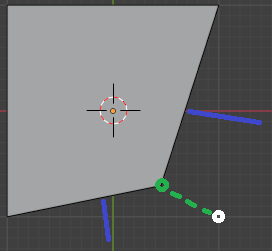I’m a bit confused about how to employ the edge sliding technique to create more curvature. Is it just edge sliding in one direction, say to the right, and then in the opposite direction, to the left (this just seems like you would end up with where you started)? Or for example, is it sliding to the right and then sliding in a different direction like up or down? Does it all just depend on the orientation of the edge in question? Any further explanation would be appreciated!
Edge slide is mostly about moving topology to where you want it. If you can give us a lecture time I might be able to see what the use case is here.
Funny enough I find sliding and edge to the left and then to the right does not leave the edge in the same place it was at. It does change the curvature.
Regular cube
Edge slide to the right
Edge slide back to the left
It can sound confusing, but sliding in any direction can change the curvature based on its shape really.
It took me a while to wrap my head around why edge sliding does what it does.
Let’s assume you edge slide some distance to the right, and then to the left. The net change of those two movements is basically equivalent to moving the edge in along a line that approximates a weighted average of the two normals of the faces you slid across. This top-down view might help:

- The white circle is where the green edge started
- The green circle is where it is after an edge-slide up, and an edge slide left (order doesn’t matter)
- The blue lines are the normals of the faces that were edge-slid across
- If the green line were an axis, the net change resulting from the two edge slides would be exactly the same as grabbing and moving the edge along that axis. It’s not an axis though, and edge sliding is a way to get around that limitation so that you can transform along this imaginary line anyway.
Also, one direction and opposite direction vs. one direction and a different direction, both are valid and useful in different situations depending on the curve you want. Although the former is more common than the latter, I’m pretty sure Grant does both while making the dinosaur.
Thank you for taking the time to answer! That clarified a lot!
Wow, thank you for all of that. Also very helpful!
This topic was automatically closed 24 hours after the last reply. New replies are no longer allowed.




